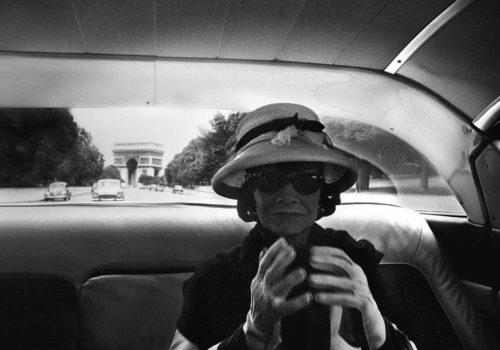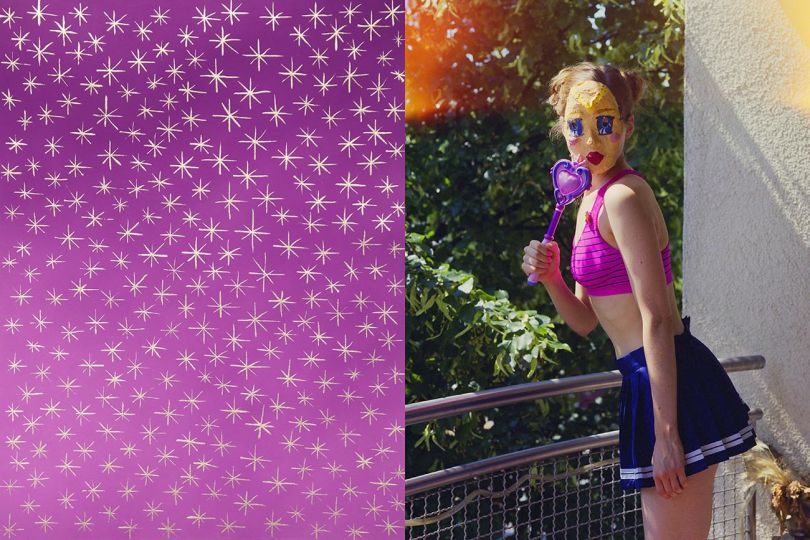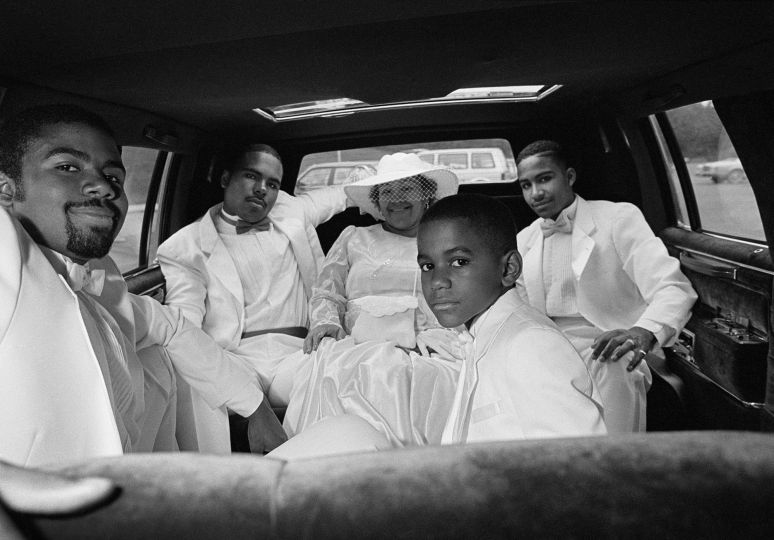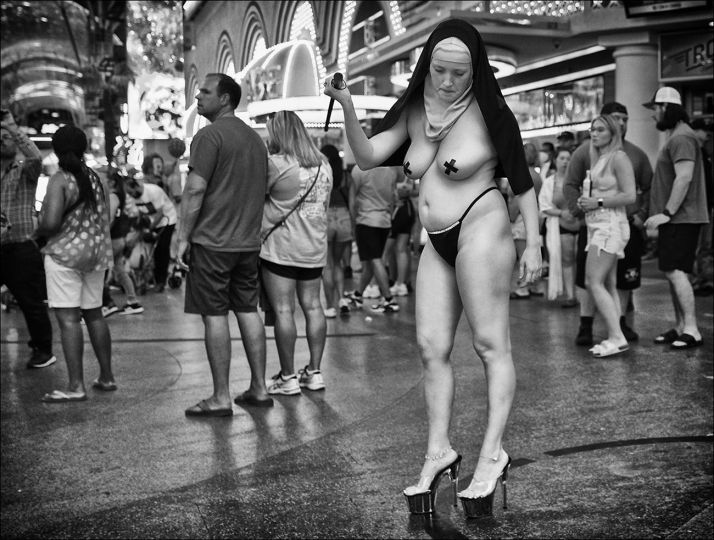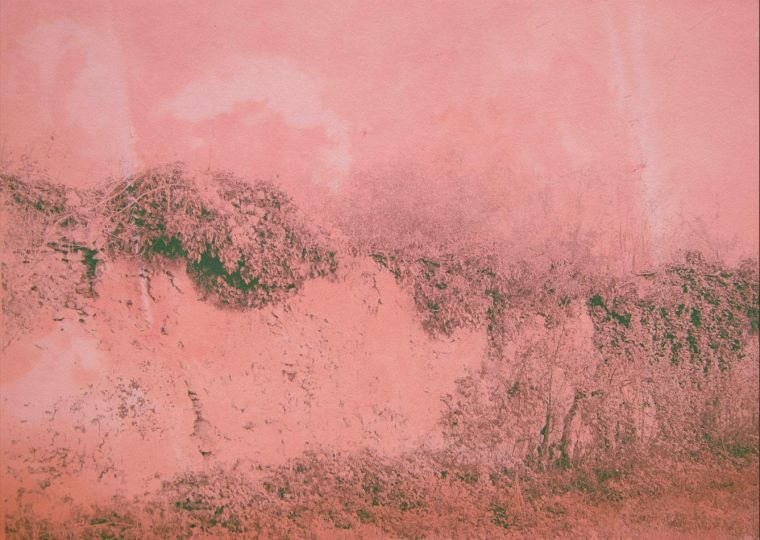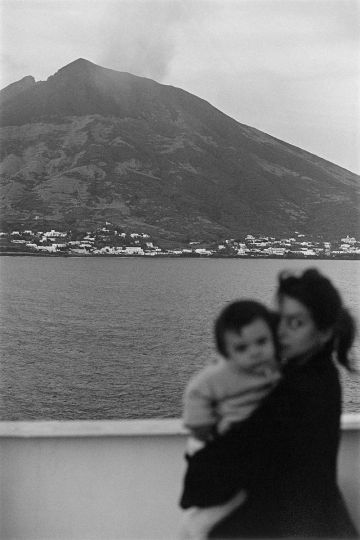Gabrielle “Coco” Chanel (1883-1971) is a fashion icon unlike any other. She invented modern clothing for women: At the height of the Belle Époque, she stripped women of their corsets and feathers, bobbed their hair, put them in bathing suits, and sent them out to get tanned in the sun. She introduced slacks, costume jewelry, and the exquisitely comfortable suit. She made the first couture parfum, Chanel No. 5, which remains the most popular scent ever created.
Douglas Kirkland remembers, “I photographed Coco Chanel back in 1962. In the mid-90s I had the idea of doing a book. I showed the photographs to publishers and they said that they couldn’t see it but Marta Hallett moved within minutes of seeing the materials and said, ‘We can make it work. How do you feel about writing the text?’
“I felt I had a lot to tell. Coco Chanel had a great impact on my life. Mademoiselle, as she was always to be called , really took me under her wing. She said, ‘You are empowered to do anything you want.’ She wanted to help me. ‘You should learn French with a dictionary in your pocket,’ she said. She used to say ‘Read the newspaper and if you don’t understand something, get your dictionary out.’ She taught me how to learn.
“I learned by watching how she took charge of things. People did not question her because she was the “Grande Dame”. This was Mademoiselle.”
This November, Douglas Kirkland will release the third limited edition of his celebrated monograph, Coco Chanel: Thee Weeks/1962 (Glitterati Incorporated). Sent to Paris for LOOK Magazine, Kirkland lived with Chanel for three weeks, capturing public and private moments of her life. The photographs are marvelously prescient of a time that would come half a century later, as the success of Coco Chanel confirms.
As Judith Thurman writes in the book’s foreword, “[Kirkland] didn’t yet know (or yet couldn’t be sure) that time would reveal his incomparable talent for discerning the true colors of an elusive celebrity who had mastered the chameleon’s trick of hiding in plain sight. But if you study the poignant encounter documented in this volume, you will discover why so many otherwise wary and artificial idols (Marilyn, Bardot, and countless others) have let down their guard. Chanel was a haughty, baroque character, and full of grudges. But her genius was for simplicity, and to achieve simplicity, you have to trust your instincts. That is what she saw—and trusted—in Douglas Kirkland. He shoots from the heart.”
It is from this heart that Kirkland’s photographs come, one after another, warm and full of love. As the he recalls in the book, “As a photographer, your hands fall on the right places of your camera. The touch of the lens, the feel of the aperture have the comfort and intimacy one feels with a lover. You steer into where you find the image, the perfect frame. To this day, I still feel magnetically drawn as I start shooting. I run through a disciplined checklist: Am I keeping the camera steady? Is the exposure right and the focus? Am I at the best angle and in the right place? Should I be talking, yelling, or silent? As everything goes on, I must be listening as well as finding pictures. I must be sensitive to my subject. Those are the thoughts that kept running through my head, over and over as I was photographing around the atelier.”
His sensitivity remains, decades after the photographs were taken. Kirkland personally selected the new print for the limited edition, which is captioned, “As we left for Versailles that Saturday afternoon, Mademoiselle wore one of her most famous accessories, the Chanel sunglasses.”
Speaking about the book’s incredible success, Kirkland confides, “My relationship with Marta Hallett and Glitterati Incorporated has had a major impact on the last seven or eight years of my life. It’s changed my perspective and I haven’t done a book with another publisher since we started working together. Glitterati is a boutique publishing house. They do everything with great care and concentration. The design is extraordinary and I am quite happy to have Sarah Morgan Karp do everything. I love to watch what she does. When you design a book you have to think it through and determine what images will have the most impact. You think of the story you have to tell in pictures.
“I teach and give lectures, and the question is frequently asked, ‘How did you get to where you are?’ My books tell where I came from “step by step”. Mademoiselle was one of those steps. Coco Chanel is done in a very refined manner that is typical of Glitterati. You get a real, true inside look. Mademoiselle said, ‘You can do whatever you want.’ She started small herself. The name is almost bigger now than what it was when she was alive. She was 79 when I photographed her. She treated me like a son, maybe the son she never had. She was very caring and gentle with me.”
http://glitteratiincorporated.com/products/coco-chanel-three-weeks-1962-deluxe-edition-by-douglas-kirkland
http://www.douglaskirkland.com

